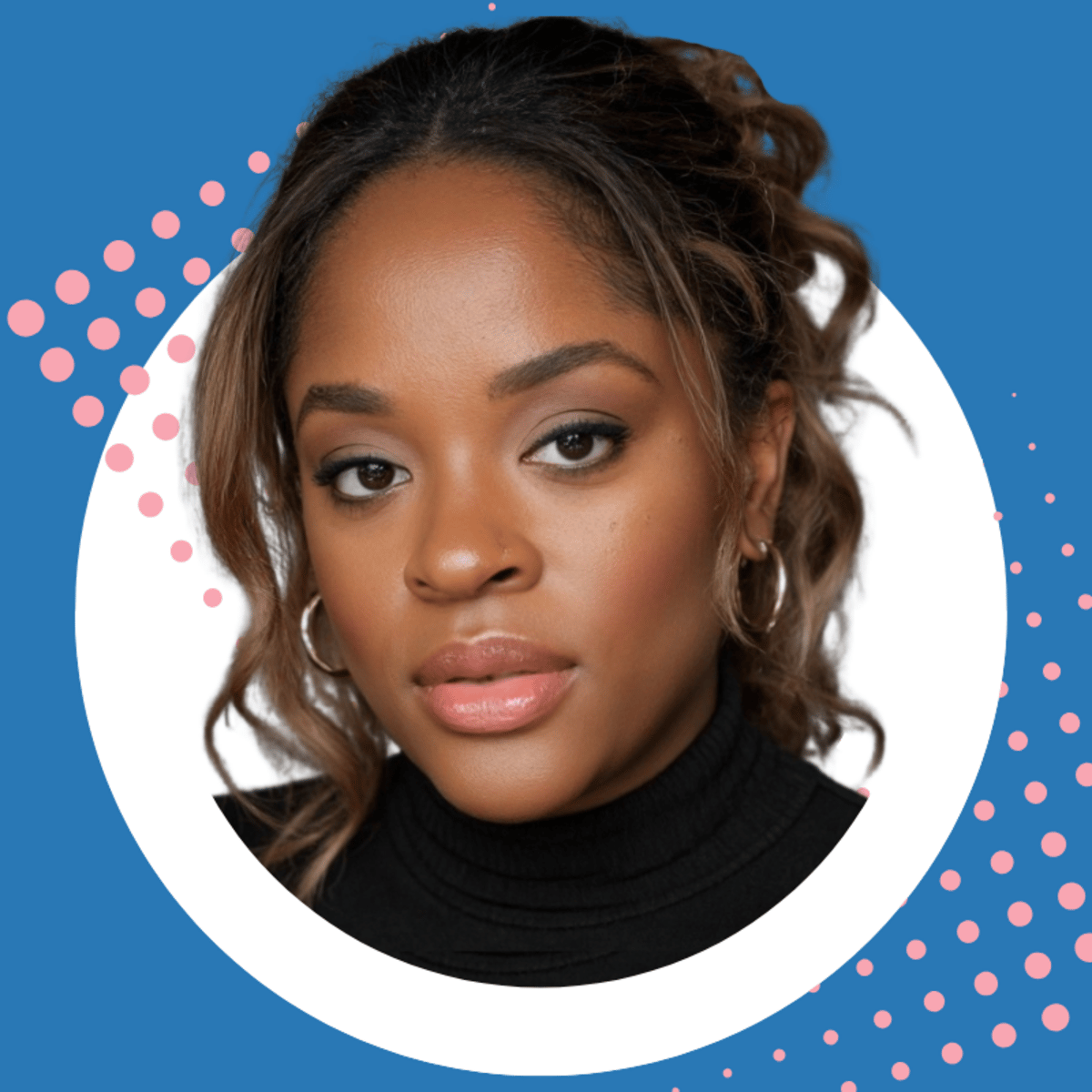
Partnerships don’t start with the brand. They start with the humans reading your emails, making the case internally, and tying this partnership to their own career growth. If you don’t see them, respect them, and support them, the commitment won’t hold up.
This is one of my core work beliefs. Write it down. Tattoo it if you must. Because a brand can’t cut you a check without an actual person convincing someone else in the building to approve it. That person is your partner long before the contract is signed. And if you get this right, you don’t just earn the check, you’ll earn a relationship that can outlast their time at that company.
That’s exactly what I kept in mind as I built the partnership between PERIOD., a youth-powered nonprofit fighting to end period poverty, and OUAI, the hair-care brand founded by celebrity stylist Jen Atkin.
From the very first call, I wasn’t pitching a beauty brand. I was connecting with the women on their team. I wanted to know what they were excited about at work, what their goals looked like this year, and how they thought impact could show up inside their company. Those conversations shaped everything that came after, from the deck I presented to the engagement plan we built.
Once you understand the people, you stop pitching in the abstract and start building something they can champion.
And when they can champion it, they’ll keep it alive through budget reviews, leadership changes, and even career moves. That’s why OUAI didn’t just write a check. They supported youth programs, packed products, and joined PERIOD.’s corporate advisory board. They had multiple touch points and impacted thousands.
So let’s talk about how I did this and how you can too.
Note: I’m using a nonprofit example here, but this framework applies to any partnership, brand, agency, or creator. The context changes, but the people part doesn’t.
Step 1: Fit the people, then the brand
When I first connected with the team at OUAI, I wasn’t thinking, “Wow, big beauty brand, let’s go!” I was thinking, “Do these people actually get it? Can they explain to their CMO why period poverty is a cause worth supporting?”
I didn’t launch straight into a deck about PERIOD. during our first call. I asked about the women I was connecting with. What they were excited about inside OUAI, what their goals looked like this year, and where they felt impact could fit. That gave me the blueprint. By the time I shared our deck, it wasn’t “here’s a list of nonprofit asks,” it was “here’s how what we do ties directly to the wins you already care about.”
That’s a huge difference. It meant when they pitched internally, they weren’t saying, “This is Candice’s thing or this is PERIOD’s thing.” They were saying, “This is our thing.”
Because they cared, they asked thoughtful questions about visibility, audience impact, and employee engagement. They brought in other teams so the partnership felt connected across the organization and returned with ideas that built on our conversations. They wanted to get the language right when sharing with their community and thinking thorough what next year might look like.
💡 Ask for a meeting with other team members before you finalize your deck: Who are the other stakeholders? What do they care about? What do they need? Getting those answers early can expand your scope and sharpen your ask while scoping a longer term partnership.
Step 2: Balance ambition with capacity.
Partners aren’t waiting to plan your gala or co-write your annual report. A brand’s team already has a full plate. It’s your job to design engagement that feels meaningful without overwhelming the client or stretching their team beyond capacity.
I don’t throw spaghetti at the wall and say, “Here’s a bunch of things you could fund.” I map what I can realistically deliver and what would feel meaningful for the client as a brand.
In this specific case, I started with PERIOD.’s bandwidth. What events and campaigns were already happening no matter what? Period Action Day, packing parties, the advisory board meetings. Those are baked into the calendar, which means they’re easy to scale without reinventing the wheel. They also add value on both sides.
Next, I looked at OUAI’s goals. They cared about doing good in their community first and foremost which is amazing to come across but, we still had to think about their brand. Things like visibility, employee pride, and ways to connect with Gen Z authentically.
Finally, I layered in some accountability. We have the type of partnership that requires monthly check-ins but it varies. You can’t drop a partner into a big splashy moment and then disappear.
That’s how I landed on four touch points: one big tentpole, one employee engagement lever, one advisory seat, and one steady rhythm of proof. I wanted enough to keep them invested but not so much that they’d ghost us. And not so much that our team spent more time managing the partnership than serving our community.
This balance went straight into the deck. I laid out engagement opportunities by level of effort for both OUAI and for us. It was a simple matrix: low, medium, and high lift. I used it to show that we weren’t asking for everything at once, we were showing a plan that made sense for both sides.
💡 Map the overlap. The sweet spot is where your existing strengths meet the partner’s actual goals. Don’t build from scratch unless you have to.
Step 3: Engage like work besties, not like vendors
PERIOD. showed up at OUAI’s virtual town halls and later went to their office in LA for in-person service events with their employees. Employees got hands on and packed period supplies, learned about the organization and the real impact made. Most importantly, they had fun together. Employees didn’t leave thinking, “Our brand wrote a check.” They left thinking, “I personally helped fight period poverty and I want to keep this going.”
Those monthly meetings I mentioned last for 30 minutes, and I treat them like a standing coffee catch-up, not a dry status update. I come with receipts: how many products were distributed, what new stories came out of the field, and what their support made possible. I also share what’s happening across our service work and programs, the fun moments as well as the serious ones, so they see the full picture.
And I always close with one clear ask. Not five. Not “let me know your thoughts.” Just one concrete thing they can say yes or no to. That keeps me consistent and valuable without crossing into annoying. They never wonder why we’re meeting, and I never wonder if they’re walking away confused.
💡 Ending every check-in with a single, specific request creates clarity and builds trust.
Step 4: Give them a seat at the table
I added OUAI to PERIOD.’s Corporate Advisory Board. I’ve found that when you give people ownership, you get their loyalty. Partners don’t just fund the work. They shape it.
They bring insights from beauty, retail, and culture that help the team think differently as a nonprofit. They ask questions others wouldn’t have thought to ask. And in return, they feel proud to say, “We helped build that.”
Advisory seats turn sponsors into investors but they aren’t always the right choice.
The pros:
A partner with a seat feels like they’re part of the strategy, not just funding the work.
It brings new perspectives from people outside the nonprofit world who notice things you might miss.
It creates internal champions who carry your message inside their company long after the initial excitement fades.
The cons:
Advisory boards take time. They need agendas, facilitation, and follow-up. If you don’t have capacity, it can drain more than it delivers.
Without clear roles, advisory members can start acting like decision-makers instead of advisors.
If you add partners just to show a list of logos, no one gets value.
The key is structure. Ours is light but intentional: one strategic question per quarter, one co-build tied to a business moment each year, and clear boundaries on governance versus guidance.
I’ll save my full playbook on “what makes a good board” for another newsletter, because it deserves its own breakdown. But here’s the short version: if you don’t design the board with care, it will eat your time and deliver nothing. If you do it right, it becomes one of the most valuable loyalty tools you have.
💡 If they help shape it, they’ll help protect it. Always give your partners some skin in the game.
Step 5: Care about their careers, not just their brand
People change jobs. The woman who championed your nonprofit at Brand X might be at Brand Y in six months.
I make it a point to care about my partners’ careers. I’m not trying to flatter them, I just look for those threads of alignment. If they’re working on a promotion or leading a new initiative, I want our partnership to help them tell that story. If they’re trying to prove to leadership that social impact isn’t just a nice-to-have, I want to give them receipts that make their case stronger. Partnerships aren’t just nonprofit outcomes. They’re career outcomes too.
And if they leave I don’t lose the relationship. I gain a friend who now has influence somewhere else. I’ve seen this play out. Someone leaves a brand, calls me months later, and says, “I’m at a new place and I think we can do something even bigger here.” That’s the kind of call you want.
That only happens if you’ve built trust with the person, not just the company. That’s why I focus on the humans across the table as much as the logo on the deck. That’s my ultimate marker of success.
💡 Partners aren’t just gatekeepers. They’re people building careers. If your partnership helps them win inside their company, they’ll take you with them wherever they go.
The takeaway
OUAI didn’t become an amazing partner because of a flashy pitch. They became a great partner because a group of women inside that company cared, I respected their bandwidth, and we built a system of engagement that worked for everyone.
The real test of a partnership is if it still makes sense a year later? With OUAI, the answer is yes because the relationship is layered. We’ve created moments that mattered for them, shared receipts that proved impact, and built trust at the human level. That’s the kind of foundation that can grow in year two, year three, and beyond.
Other people will tell you to chase brands. I’m telling you to chase people. A brand won’t spending time wondering how to make this work. Brands don’t email you back. People do. And people are the ones who carry you into the next company, the next boardroom, and the next opportunity.
That’s how you build partnerships that last.
